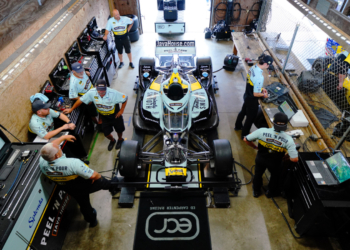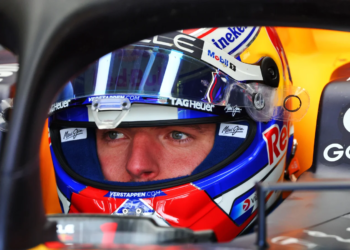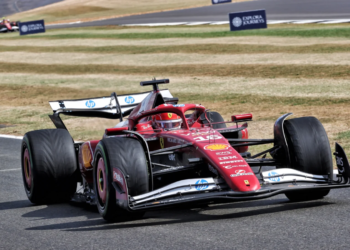Formula 1 heads to Spain next weekend for its annual, and perhaps final, visit to Barcelona. A decade ago it was very different, with the sport also taking in a trip to Valencia. But what happened to that street circuit?
Formula 1’s association with Spain is weakening as the current decade nears its conclusion. Fernando Alonso – the country’s only Grand Prix winner and World Champion – skulked out of the door last year, while the Circuit de Barcelona-Catalunya’s contract expires after next weekend’s race. Its future – amid the unwillingness of the regional government to pay, the disdain at the ‘Spanish’ moniker through the ongoing Catalan independence arguments, not to mention the still precarious economic situation – is precarious. Zandvoort is being lined up as a mid-May replacement on the calendar.
It was all rather different a decade (or, perhaps, a little more than a decade) ago. Spain was booming. Cultural and sporting projects were in. Alonso was a World Champion surely set to add title after title to his tally of two. Alas…

Valencia never truly struck a chord with Formula 1; it was not the worst circuit in the world, but far from the best, and the surroundings – even accounting for nearby beaches and the stunning Ciutat de les Arts i les Ciències – were not exactly Monaco. It had two standout moments – Mark Webber’s terrifying flip in 2010, and Alonso’s unexpected triumph in a thriller a couple of years later – but it attracted thin crowds, accentuated by the collapse of Spain’s economy as part of the worldwide recession of 2008-9. The Valencia project failed after five grands prix and rumours of political corruption were rife. On a wider perspective, hundreds of construction projects in Spain were stopped and merely abandoned. It is not uncommon to see half-built houses, or even entire apartment/business blocks, that were just left to ruin, even a decade later; the most famous example of idealism mixed with financial reality is the Cuidad Real Central Airport.
Valencia, thus, dropped from the F1 calendar in 2013, but it is an unusual case study. Most Formula 1 venues are permanent, and if they disappear, remain active for other series. Other extinct street circuits have been returned to use as highways. Valencia’s semi-permanent nature means it was just… left. Not many old Formula 1 venues are just abandoned – not recent ones, anyway. Out of curiosity, Motorsport Week took a visit to the Mediterranean city to explore (most) of the venue. And yes, the weather did change…
Pit Straight

This is still used as a public road, albeit the lanes do not align with the track markings, occasionally making driving a little confusing. The blue strip separating the circuit from the pit wall remains, albeit faded, while the artistic old fish market building used to house the garages has fallen into disrepair. A similar structure, a few hundred metres further along the road, has been converted into a makeshift skate park, with people of all ages utilising the expanse on a warm winter weekend.
Turns 1 Through 8


These turns wind their way around a few port-side buildings, and all of the track markings are still present, including a line of barriers into Turn 4, and the old (faded) advertising marks on the inside of the apexes. Turns 4 through 7 is still used as a two-lane road that takes motorists to the port-side car park, adjacent to which is the beach that stretches along the Mediterranean for miles. The blue-and-white concrete blocks/fences that mark the Turn 7 run-off are there, along with some of the very faded Telefonica branding.
The Back Straight

.jpg)
This is basically in the port, which was not exactly the busiest of areas on a weekend. The Swing Bridge was open – effectively dividing the track – while the inside crash barrier and kerbs at Turn 9 were still in place, as were some of the harbour-side barriers and track markings on the run to Turn 10.
Turns 12/13


This area is a roundabout – though even that still has a temporary feel, with concrete blocks defining the road layout and rudimentary wooden planks for pedestrians to traverse. The small stretch between Turns 12 and 13 is still part of a major access road but where the track swings right at Turn 14 almost the entirety of the old circuit is still present, included painted run-off, lines, even astroturf. It is a spooky and surreal sight, particularly with the futuristically staggering and popular tourist attraction of the Ciutat de les Arts i les Ciències in the background. The track is still fundamentally recognisable, nestled between scrubland and the back of a police station, and all that would make you believe it’s not ready for use is a few bollards strewn over the place.
The Semi-Permanent Section



The second-long back straight (that is slightly curved) is practically inaccessible – and is actually part of a shanty town that, probably, is not a wise idea to visit – but Turns 18/19 are reachable, and indeed you can still get onto the circuit by climbing through the fences that remain. The kerbs are still there, some of the inside fences have been left, others dismantled and destroyed, while a few painted-on-the-wall Santander logos remain. It did have a semblance of use – someone was walking a dog, while a few people were limbering up for a nearby fun run. The whole inside area is scrubland, with rubbish, broken concrete, and an aura that this area has been left to complete ruin. But perhaps the saddest sight of the project’s outcome is that of a tent placed in the run-off. Considering a major tourist attraction is a 10-minute walk in one direction, and the beach 10 minutes in the other direction, the sense of emptiness, desolation and abandonment couldn’t be more striking.
The Final Corners

That has also been fenced off – with the surrounding area not one of the finest in the city – and as with the remainder of the track that was semi-permanent, on the surface it as if it has been untouched since 2012. Indeed, even the road used to reach the final sector is ostensibly the old access road, which itself has a secondary fence on the other side. A few weeds have grown through, but with a bit of gardening and a lick of paint it’d be back to use in very little time – which makes the abandonment an even sadder picture.
Completing The Lap

The final turn brings the old circuit back onto the existing two-lane road close to Turn 12. Will F1 ever return to Valencia? No. Not a chance. But the remnants of F1 will always be there.






